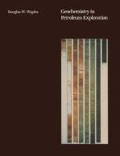Abstract
We have seen how to circumvent problems inherent in the analysis-based geochemical approach by using models to predict organic facies (chap. 2) and thermal maturity (chap. 9). Even with such models, however, we still do not have a scheme that is directly applicable in exploration. For geochemistry to have maximum value for explorationists, it must utilize a comprehensive model for the entire hydrocarbon system under study. This model should describe the locus and timing of hydrocarbon generation, direction and efficiency of migration, probable areas of entrapment, and potential for preservation in a reservoir.
Access this chapter
Tax calculation will be finalised at checkout
Purchases are for personal use only
Preview
Unable to display preview. Download preview PDF.
Suggested Readings
Bishop, R. S., H. M. Gehman,Jr., and A. Young, 1983, Concepts for estimating hydrocarbon accumulation and dispersion: Bulletin of the American Association of Petroleum Geologists, v. 67, pp. 337–348.
Demaison, G., 1984, The generative basin concept,in G. Demaison and R. J. Munis, eds.,Petroleum Geochemistry and Basin Evaluation: American Association of Petroleum Geologists Memoir 35, Tulsa, American Association of Petroleum Geologists, pp. 1–14.
Demaison, G. and R.J. Munis, 1984, eds.,Petroleum Geochemistry and Basin Evaluation: American Association of Petroleum Geologists Memoir 35, Tulsa, American Association of Petroleum Geologists, 426 pp.
Moshier, S. O. and D. W. Waples, 1985, Quantitative evaluation of Lower Cretaceous Mannville Group as source rock for Alberta’s oil sands: Bulletin of the American Association of Petroleum Geologists, v. 69, pp. 161–172.
Sluijk, D. and M. H. Nederlof, 1984, Worldwide geological experience as a systematic basis for prospect appraisal,in G. Demaison and R.J. Munis, eds.,Petroleum Geochemistry and Basin Evaluation: American Association of Petroleum Geologists Memoir 35, Tulsa, American Association of Petroleum Geologists, pp. 15–26.
Tainter, P. A., 1984, Stratigraphic and paleostructural controls on hydrocarbon migration in Cretaceous D and J Sandstones of the Denver Basin,in J. Woodward, F. F. Meissner, and J. L. Clayton, eds.,Hydrocarbon Source Rocks of the Greater Rocky Mountain Region: Denver, Rocky Mountain Association of Geologists, pp. 339–354.
Author information
Authors and Affiliations
Rights and permissions
Copyright information
© 1985 International Human Resources Development Corporation
About this chapter
Cite this chapter
Waples, D.W. (1985). Integrated Applications to Exploration. In: Geochemistry in Petroleum Exploration. Geological Sciences Series. Springer, Dordrecht. https://doi.org/10.1007/978-94-009-5436-6_12
Download citation
DOI: https://doi.org/10.1007/978-94-009-5436-6_12
Publisher Name: Springer, Dordrecht
Print ISBN: 978-94-010-8900-5
Online ISBN: 978-94-009-5436-6
eBook Packages: Springer Book Archive

